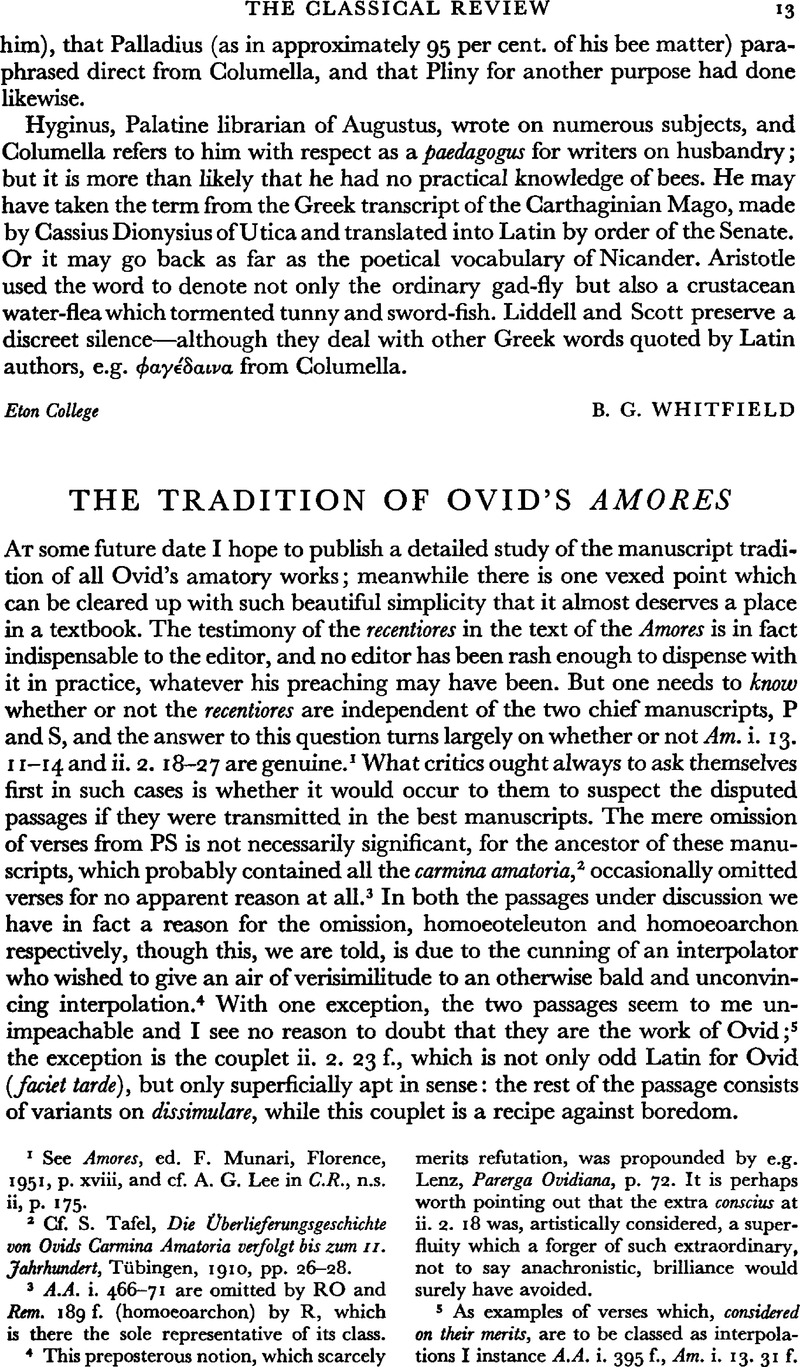No CrossRef data available.
Published online by Cambridge University Press: 13 February 2009

1 See Amores, ed. Munari, F., Florence, , 1951, p. xviiiGoogle Scholar, and cf. Lee, A. G. in C.R., n.s. ii, p. 175Google Scholar.
2 Cf. Tafel, S., Die Uberlieferungsgeschichte von Ovids Carmina Amatoria verfolgt bis zum 11.Jahrhtmdert, Tübingen, 1910, pp. 26–28Google Scholar.
3 A.A. i. 466–71 are omitted by RO and Rent. 189 f. (homoeoarchon) by R, which is there the sole representative of its class.
4 This preposterous notion, which scarcely merits refutation, was propounded by e.g. Lenz, , Parerga Ovidiana, p. 72Google Scholar. It is perhaps worth pointing out that the extra conscius at ii. 2. 18 was, artistically considered, a superfluity which a forger of such extraordinary, not to say anachronistic, brilliance would surely have avoided.
5 As examples of verses which, considered on their merits, are to be classed as interpola-tions I instance A.A. i. 395 f., Am. i. 13. 31 f.